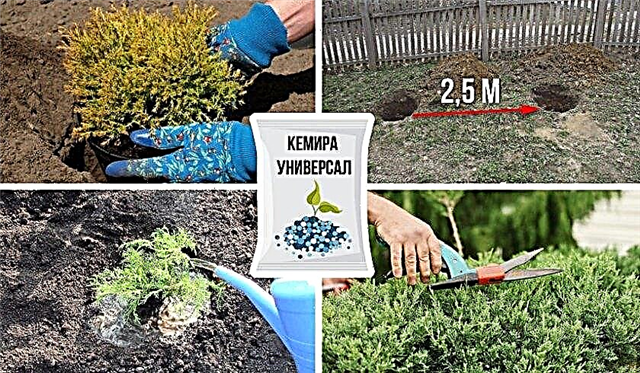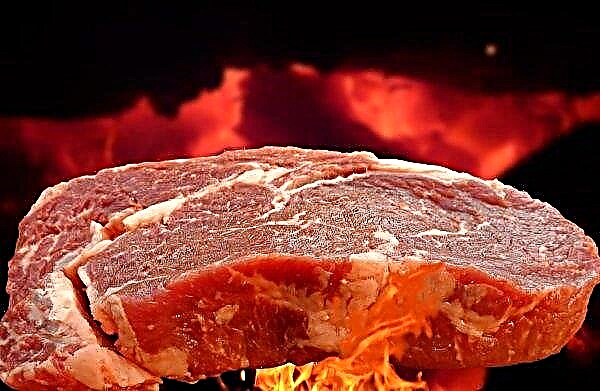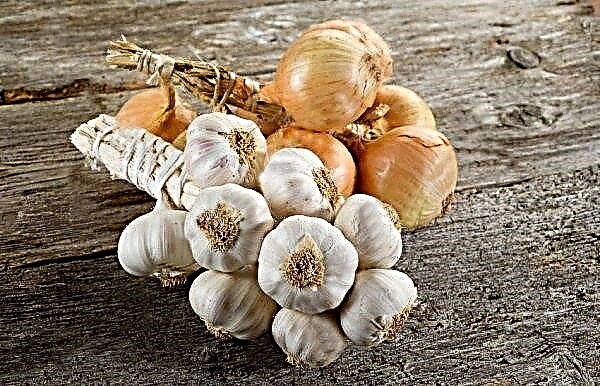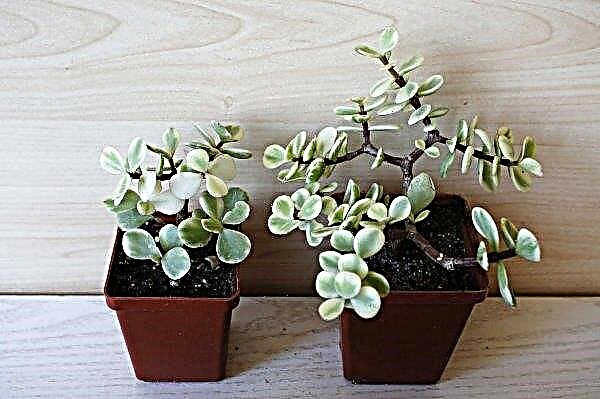The mesh bottom for the hives has its pros and cons. Before installing it, you need to weigh the pros and cons, taking into account the climatic conditions of a particular region. Read about how to make this type of bottom yourself and what mesh to use.
Mesh bottom features
The mesh bottom for a multihull hive is a fairly common technological option abroad. Below is one of the variations of the assembly of such a bottom. In the Russian Federation, such bottoms gained distribution only thanks to small-sized hive systems. In most cases, in Russia, dadan (hive sunbed) or root are used, for which the mesh bottom is not suitable.
Did you know? The queen bee lives and remains fertile for 5 years.
In addition to small-sized models, the mesh base is used in modern polystyrene and polyurethane foam structures. Such materials do not breathe, so you need to organize a high-quality ventilation system, the role of which is played by the grid.

Wintering of bees on the mesh bottom is ideal for regions with frequent temperature fluctuations: for example, when during the day the temperature is positive and at night it is 0 ...- 4 ° С. Gathering in the club, the bees emit heat, which in the reaction with minus temperature gives the effect of condensate.
As a result, warm air rises to the upper part of the hive, where it is converted into drops of water and, flowing down from the walls, at night remains at the bottom in the form of an ice crust, and on the walls in the form of hoarfrost. Frequent thaw is a serious problem leading to the spread of disease due to increased humidity in the hive. In the spring in such a bee house, almost all the wooden parts are covered with mold.
Did you know? The mesh bottom is an effective protection against tits and mice in winter.
A double bottom will help to easily solve the problem of drainage of excess water and ventilation of the hive area. A valve is mounted under the grid, which closes at the time the brood appears in the spring to maintain the microclimate in the hive. Immediately after the appearance of the first working bees on the notch, it is completely removed. The bottom mesh can be used not only in winter. It is great for year-round use.
Pros and cons of mesh bottom
The mesh bottom has not only advantages, but also disadvantages. Evaluation of these indicators will allow you to properly organize work in the apiary and minimize losses in bee colonies.

- The main advantages of the design:
- maintaining the right microclimate in the hive all year round;
- the ability to protect bees from the effects of chemicals when they process nearby fields by closing the grid;
- the implementation of medical manipulations with the help of a smoke gun through the lower part of the hive, without opening the top cover and without disturbing the swarm;
- increased productivity of honey - due to the availability of high-quality artificial ventilation, bees do not have to leave 20% of workers to ensure it;
- if necessary, the beehive will not be hot in the bee in a new place;
- in the spring in this hive there are no processes of mold formation and honey fermentation;
- when pickling ticks and other pests, they crumble down and fall through the net, which does not allow them to return back to the hive;
- the presence of a grid prevents the appearance of an unwanted late brood in the fall;
- the ability to maintain high-quality sanitary conditions - all mortalities are collected on a grid.
- The disadvantages of the bottom mesh are associated more with the operation of the structure, which must be taken into account in advance:
- high cost of materials;
- getting wax and pollen crumbs on the grid attracts moles - the problem is eliminated by disassembling the grid, cleaning and disinfecting it;
- feeding the bee colonies in the winter leads to theft;
- increasing the overall dimensions of the bottom due to the need to install additional stakes for structural stability.
Making a mesh bottom for a do-it-yourself hive
The high mesh bottom is made of stainless metal. Other materials are completely unsuitable, as they will easily be damaged by the insects themselves and various predators.
When constructing the mesh bottom, you can use the drawing for the horned hive, presented below.

Sizing
Dimensions are determined depending on the dimensions of the hive itself. First you need to measure the size of the bottom of the lower part of the body - this will be the dimensions of the mesh bottom. The height of the structure can be different and vary from 145 to 300 mm. It all depends on the user's preferences.
What is needed
For the manufacture of mesh bottom, the following materials will be required:
- wooden frame, suitable in size;
- fine mesh;
- 4 bars that will hold the grid on the frame, instead of them you can take a second frame of the same size;
- a plywood sheet smaller in size than a 2 cm mesh sheet.
Important! The smaller the cell on the grid, the better airing will occur, and the problem of blowing the wind will be completely solved. Perfect option — 1 × 1 mm or 1.5 × 1.5 mm.
From the tools you will need:
- screwdriver;
- screws;
- corners.
Step-by-step manufacturing instructions
The manufacturing process of the structure:
- Boil all wooden parts in a paraffin or wax mixture.
- Place the net on the frame.
- Lay the beams (the second frame) on top of the net and screw them with a screwdriver.
- At the bottom of the bottom, screw 4 corners on the sides for the plywood damper.
Video: making the mesh bottom for the hive
How to keep bees in a mesh bottom hive
The technology for keeping bees on a grid is practically no different from the usual standard technologies.
There are several nuances that will help optimize the work in the apiary:
- When the uterus begins to worm, the bottom must be covered to keep heat in the hive.
- From the moment the first bees appeared in the notch, the plywood damper is completely removed.
- In spring, it is necessary to untwist the bottom, clean it of dirt accumulated in the cracks and disinfect.
- All preventive treatments are carried out through the lower part of the bee house, without removing the roof.
- Wintering in such hives can take place indoors and outdoors.
- In a hive with a mesh bottom, it is not necessary to make the roof deaf in order to save heat in winter. You can build several small holes in the edge parts, and lay the moss on top. In such constructions, the canvas does not fit under the winter.
The mesh bottom provides many benefits to the beekeeper and makes the conditions in the hive as close to natural as possible. The most important thing is that it can be easily built independently, even without carpentry skills.Did you know? For a year, one bee family requires 30 kg of pollen for food.












